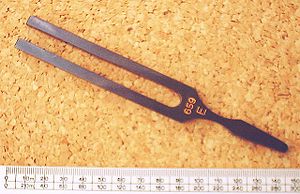When Does a Heap of Sand Stop Being a Heap?
When Does a Heap of Sand Stop Being a Heap?
Sorites Paradox or the Paradox of the Heap
Something new to do when you are building summer sand castles.
If you remove one grain of sand at a time, when does a heap of sand stop being a heap? Though this is a philosophy question, not strictly a math activity, my son, who double-majored in math and philosophy, tells me that eventually the two disciplines come together. Sorites, for Sorites paradox, is named for the Greek word for heap, soros. The Sorites paradoxes are attributed to a Greek philosopher and logistician who lived at the same time as Aristotle, Eubulides.
Let’s recreate his puzzle.
Materials:
- Sand (as much as you want, but at least a cup)
- 2 trays or cookie sheets with sides
- Optional, instead of sand: grains of rice, dried beans, cereal, buttons
Instructions:
- Pile up the sand in a single pile, or heap, on one tray
- Take one grain of sand from the pile and start a new pile on the second tray
- At what point does the first pile stop being a pile, or heap, of sand?
- At what point does the second pile become a heap?
What Should Happen?
There is no answer to this question. It is considered an unsolved philosophical question.
In order to answer it, you have to change the boundaries of the question.
There are a couple of ways to do this.
- Define a heap by how many grains of sand it must have to be considered a heap, say, 1,000, or 10, or enough to have more than one layer of sand
- Define a heap to include one or no grains of sand.
Another of Eubulides’ puzzles was:
- How many hairs must be on a man’s head until he is no longer considered bald?
This and the sand as a heap puzzle can be asked in either direction, starting with none to see when a heap is reached or a man is no longer bald, or starting with a heap or a man with hair to see when it is no longer a heap or a man is bald, just as when you moved the sand from one tray to the other.
Why Is This Useful?
There are many areas where gradation, or changing little by little between defined categories, becomes important. Understanding that you have to define your categories precisely, so everyone understands and agrees, lets you communicate what you really mean. Vagueness, which is at the heart of the Sorites paradox, does not always work.
Color .
Though we can tell the difference between pink and red, there are lots of shades in between. Paint stores have formulas for how much of one color paint to mix with another color to achieve a matching paint chip color so that all three gallons you buy to paint a room will be the same color.
Music.
If you’ve ever tuned an instrument, like a guitar or violin, or any stringed instrument, you understand the gradations between notes you want to play. A middle “C,” for instance, is defined as a frequency of 261.626 Hz or hertz. When we are experienced, we can hear it when it is right. Or, we can use a tuning fork that is made for a specific hertz value and note. The most common pitch for a tuning fork is “A”, for concert orchestras to tune their instruments to the second string of the violin.
Can you think of any other areas where something changes little by little?
Carol Covin, Granny-Guru
Author, “Who Gets to Name Grandma? The Wisdom of Mothers and Grandmothers”
http://newgrandmas.com
Filed in: arts & crafts & educational • education




How fun! An activity without a solid answer. What a great way to stoke a child's curiosity and sense of wonderment. Personally, I most enjoy the gradation associated with geological processes. I love visiting places like Zion and Bryce Canyon and thinking of how long it took various hoodoos to form or much water had to swirl over the side of a canyon wall to crave out a niche in the stone.
What a great example, Jeri! Water carving out a canyon is certainly a slow, gradual process.
You gotta love the fact that there is no real tangible answer. It give you a whole bunch of creative ways to think about it and things like this. Very cool!